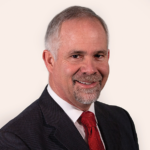According to the National Association of State Budget Officers, Medicaid now consumes 23.6 percent of state governments’ expenditures. Fortunately for state policymakers, there is now an option available to them to help create greater access to high-quality, more-affordable health care without increasing state budgets or the national debt: Section 1115 waivers.
Under Section 1115 of the Social Security Act, the secretary of Health and Human Services can approve experimental, pilot, or demonstration projects likely to assist in promoting the objectives of the Medicaid law. To get a Section 1115 waiver approved, a state must prove to the HHS secretary that its proposal meets the goals of the Medicaid program and federal budget requirements. Section 1115 waivers generally are approved for a five-year period and then must be renewed.
There are two major reform paths state legislators can follow using Section 1115 waivers. The first path allows the state to enact reforms to contain growing Medicaid costs while moving recipients out of poverty, ensuring Medicaid serves those truly in need.
For most people, Medicaid should be a temporary program, helping cover their medical needs while they work to improve their personal situation. But according to the U.S. Census Bureau, only 16 percent of Medicaid recipients work full-time; 52 percent don’t work at all. States can encourage Medicaid recipients to re-enter the workforce by requiring able-bodied individuals to work at least 20 hours per week and setting time limits on benefits. After Kansas imposed similar work requirements and set a 24-month time limit on the Temporary Assistance for Needy Families program, enrollees returned to work and saw their incomes increase, on average, 247 percent over four years.
States can also ensure Medicaid is not being abused by establishing a comprehensive eligibility verification system. After the Illinois Department of Healthcare and Family Services launched the Illinois Medicaid Redetermination Project in 2012, they removed 400,000 ineligible recipients from the program’s rolls and saved an estimated $350 million.
Adding accountability to Medicaid is crucial to containing costs and preventing abuse. State legislators can discourage patients from using costly and unnecessary health care services by imposing a modest premium and copayment for their Medicaid plans. Small cost-sharing fees on unnecessary emergency room visits could incentivize patients to visit a primary care doctor instead of visiting the ER for routine health needs.
These payments, which offset some of the costs, could be strengthened by incorporating a lock-out penalty. Under a lock-out policy, individuals who fail to make their required contributions are disenrolled and barred from reenrolling for a determined period.
Another option for states could be to transfer Medicaid enrollees onto private insurance. One possibility is the Heartland Institute’s Personal Health Care Safety Net Medicaid Fix. Under that model, a state would deposit a $7,000 annual contribution into a Health Savings Account for every adult and child on Medicaid. With these funds, low-income families would be free to purchase any health care service or plan that meets their medical needs.
The second reform path would allow states to use the waiver process to open their health care markets to new innovations. One option for states looking to expand access to primary care while cutting costs is direct primary care, or DPC, which allows patients to pay a monthly membership fee in return for a more generous allocation of appointments than they would receive under most traditional health insurance plans. A comprehensive survey of direct primary care practices in the Journal of the American Board of Family Medicine found the median monthly DPC subscription is just $75 and can be as low as $26. DPC also provides patients better health outcomes.
States can also lower costs and improve quality by allowing physicians to consult and treat patients remotely through telemedicine. As advances in information and medical technologies accelerate, doctors are increasingly connecting with patients by phone, email, or webcam to diagnose, treat, or prescribe medications for patients. Patients in thinly populated areas are especially likely to benefit from an increase in telemedicine services, since readily available physicians are often in short supply rural regions.
[Originally Published at the Washington Examiner]





